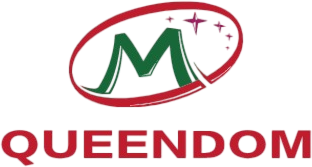LED grow lighting has become an essential component in the modern horticultural industry, revolutionizing the way plants are cultivated both indoors and outdoors. With the advancement of technology and the increasing demand for sustainable and efficient farming practices, LED grow lights have emerged as a preferred choice for gardeners, farmers, and commercial producers alike. This article delves into the world of LED grow lighting, exploring its benefits, applications, and the future of this rapidly evolving industry.
Introduction to LED Grow Lighting
LED grow lighting refers to a type of lighting technology designed specifically for the growth of plants. Unlike traditional grow lights, which often use high-intensity discharge (HID) lamps like metal halide (MH) or high-pressure sodium (HPS), LED grow lights emit light in a more targeted spectrum, providing optimal conditions for plant growth. This technology has gained popularity due to its energy efficiency, long lifespan, and ability to produce higher quality yields.
Benefits of LED Grow Lighting
The benefits of LED grow lighting are numerous, making it a preferred choice for many horticulturists. Some of the key advantages include:
1. Energy Efficiency: LED grow lights consume significantly less electricity compared to HID lamps. This not only reduces energy costs but also contributes to a greener environment.
2. Longevity: LED grow lights have a longer lifespan than HID lamps, often lasting up to 50,000 hours or more. This reduces the frequency of replacements and maintenance costs.
3. Customizable Spectrum: LED grow lights can be designed to emit specific wavelengths of light, such as red, blue, and green, to cater to the specific needs of different plants and growth stages.
4. Heat Output: LED grow lights produce very little heat, making them safer to use in confined spaces and reducing the risk of overheating plants.
5. No UV or Infrared Radiation: LED grow lights emit minimal UV or infrared radiation, which can be harmful to plants and humans.
Applications of LED Grow Lighting
LED grow lighting is used in a variety of applications, including:
1. Indoor Gardening: Indoor gardeners use LED grow lights to provide the necessary light for plants that would otherwise not receive adequate sunlight. This is particularly beneficial for those living in areas with limited natural light or for year-round growing.
2. Hydroponics: Hydroponic systems rely on artificial light sources to provide the necessary light for plant growth. LED grow lights are a popular choice due to their energy efficiency and ability to customize the light spectrum.
3. Greenhouses: Greenhouse farmers use LED grow lights to extend the growing season, increase yields, and improve the quality of their produce.
4. Agricultural Production: Commercial producers have adopted LED grow lighting to increase efficiency and reduce costs. This technology is used in large-scale operations, such as vertical farming and controlled-environment agriculture.
5. Medical Marijuana Cultivation: The medical marijuana industry has embraced LED grow lighting due to its ability to produce high-quality cannabis with minimal energy consumption.
Challenges and Future of LED Grow Lighting
While LED grow lighting offers numerous benefits, there are still challenges that need to be addressed. Some of these challenges include:
1. Initial Cost: The upfront cost of LED grow lights can be higher than traditional HID lamps. However, the long-term savings in energy and maintenance costs can make this investment worthwhile.
2. Lighting Control: Accurate control of the light spectrum and intensity is crucial for optimal plant growth. This requires advanced technology and expertise.
3. Heat Management: Although LED grow lights produce less heat than HID lamps, heat management is still an important consideration, especially in enclosed spaces.
Looking to the future, the LED grow lighting industry is expected to continue growing at a rapid pace. Innovations in technology, such as the development of more efficient and customizable LED grow lights, will further drive the industry’s growth. Additionally, the increasing demand for sustainable and efficient farming practices will create new opportunities for LED grow lighting applications.
In conclusion, LED grow lighting has become an indispensable tool in the modern horticultural industry. Its energy efficiency, long lifespan, and ability to customize the light spectrum make it a preferred choice for gardeners, farmers, and commercial producers alike. As the industry continues to evolve, LED grow lighting will undoubtedly play a crucial role in shaping the future of agriculture and indoor gardening.













Explore More from Queendom Lamp
Stay updated with the latest LED technology, lighting solutions, and industry insights.
Request a Quote About Queendom